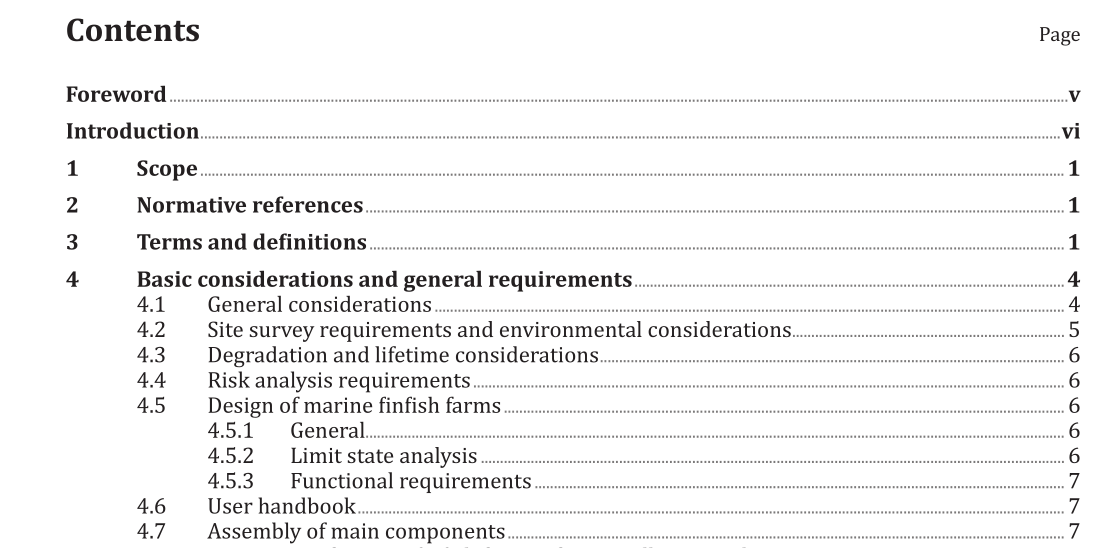ISO 16488:2015 pdf download.Marine finfish farms — Open net cage — Design and operation
1 Scope
This International Standard presents a general method to be followed for the systematic analysis, design, and evaluation of net cage marine finfish farms. One common style of a net cage finfish farm is shown in Figure 1. A mooring system holds together a series of net cages which contain finfish. Water from the outside environment freely passes through the nets, providing the necessary environment for farming finfish. The methodology presented in this International Standard allows for determination of the adequacy of a given finfish farm’s floating structure, nets, and mooring equipment for a given environment. The standard addresses specification of a design basis through evaluation of environmental conditions and acceptable risk, and specifies acceptable techniques for the design and analysis of finfish farms. This International Standard also provides guidelines for development of a handbook which documents procedures for correct maintenance and operation of the finfish farm. The application of the standard is intended to reduce the risk of escape from marine finfish farms. This International Standard is designed to be used by the operator of a net cage marine finfish farm. It is intended that through application of this International Standard that increased human safety and system integrity levels can be achieved.
4 Basic considerations and general requirements
4.1 General considerations
This International Standard is intended to provide guidelines for the design and operation of permeable net cage marine finfish farms similar in design to those shown in Figure 2 and Figure 3. The owner/operator of a marine finfish farm is responsible, through the use of a risk evaluation, for assessing the environmental conditions at a prospective site, selecting the appropriate equipment for use at the particular site, and for the safe operation of the finfish farm. The main components should be designed according to ISO standards that are relevant for the component in question. Where ISO standards do not exist, appropriate international or regionally accepted standards should be applied to ensure a high level of system safety and quality assurance. For example, the design of a steel structure should use ISO 19902 or EN 1993. Internationally accepted codes and standards that exist and which provide guidelines for the technical design and integrity of system components may be used. However, the user must ensure that the design philosophy intended in this International Standard is met and consistent operational and human safety levels are applied.
ISO 16488:2015 pdf download
